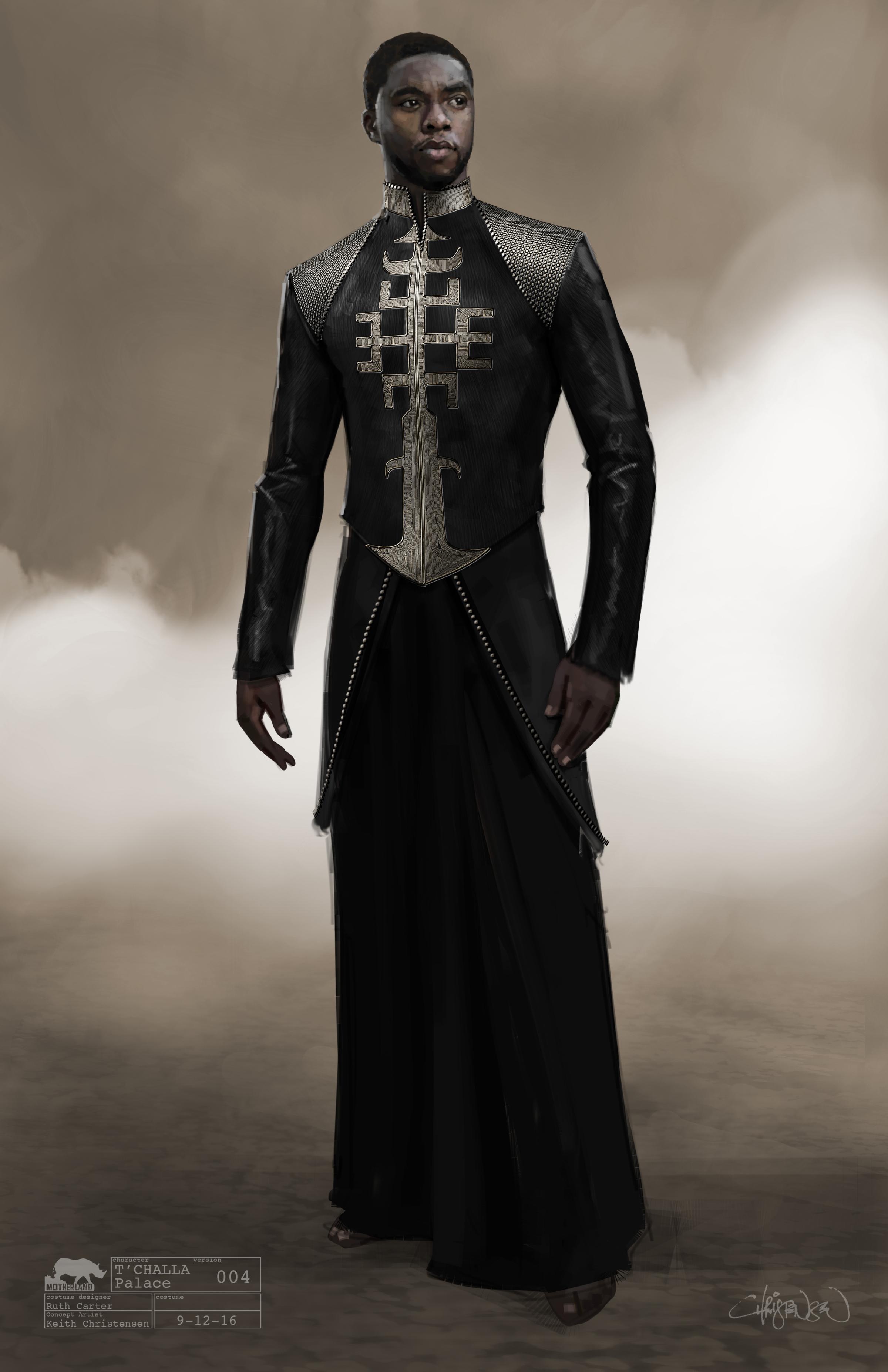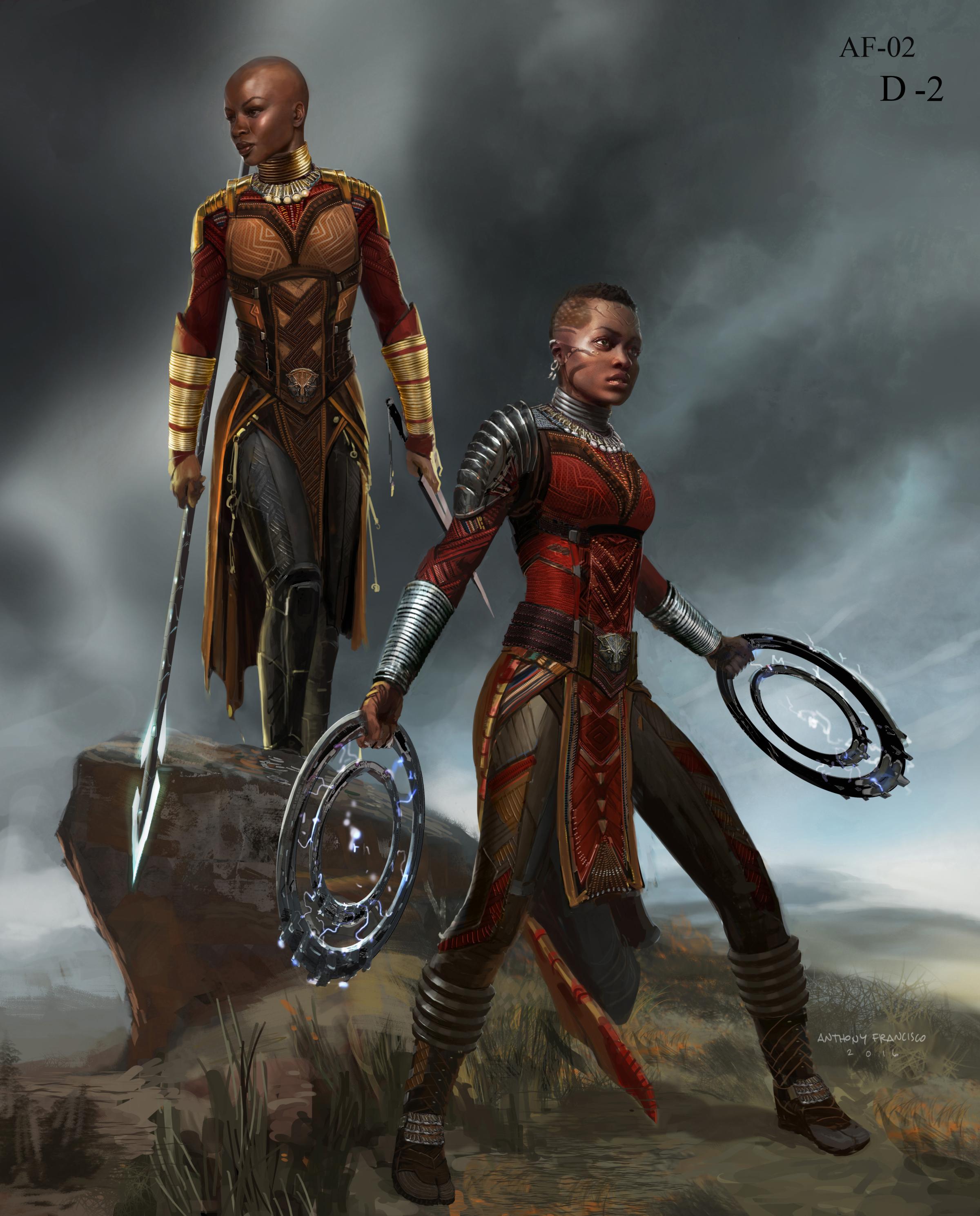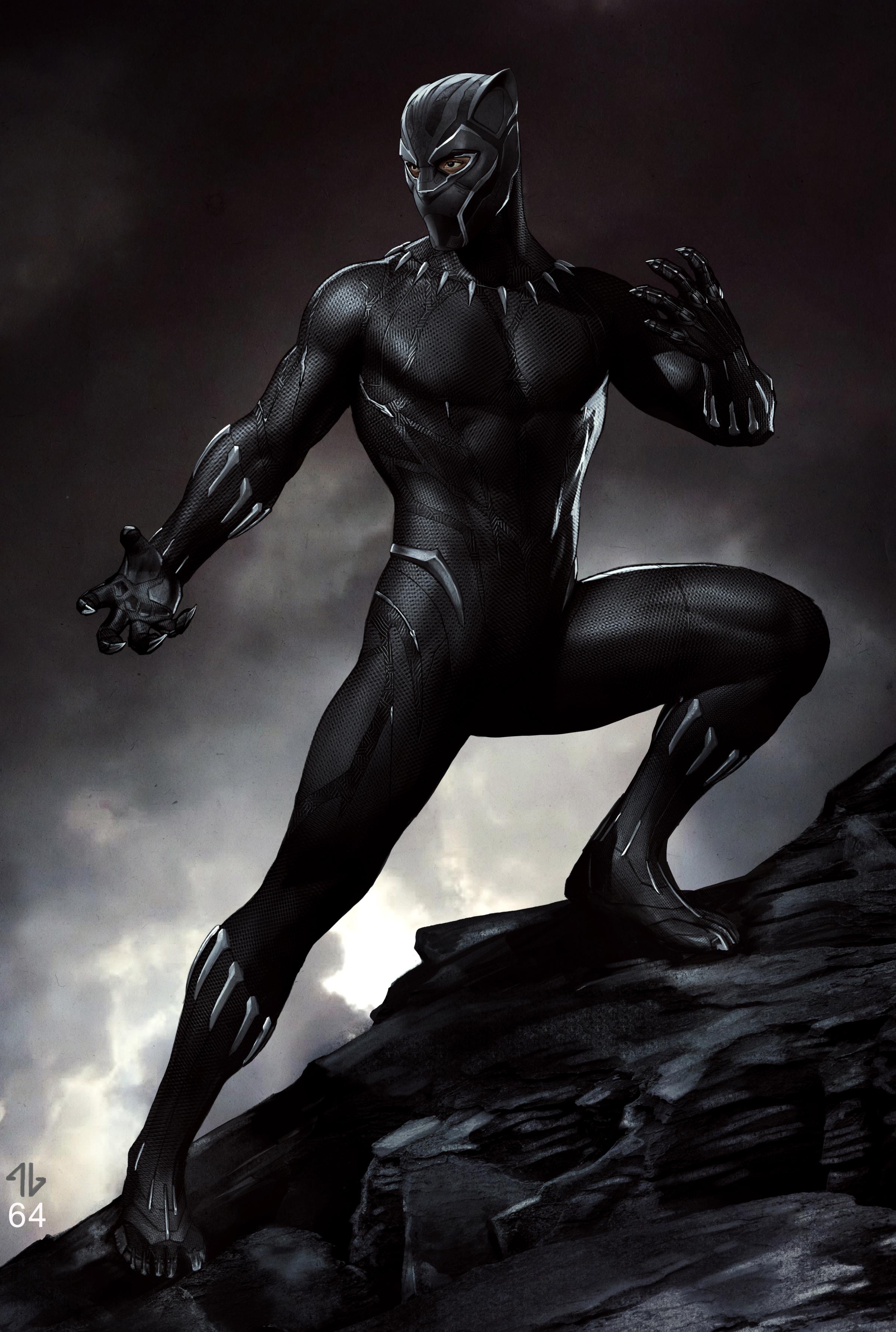Ruth E. Carter’s resume as a costume designer reads like a roll call of some of the most culturally significant films of the past three decades: Malcom X, Selma, Do the Right Thing, What’s Love Got to Do With It?, Mo’ Better Blues. But her latest film, the revolutionary and deservedly much-hyped Black Panther, might be her most notable project yet. With over 1,000 costumes that she conceptualized and created for fantastical world of Wakanda — drawing inspiration from Afropunk fashion and traditional African tribal garments — it seems fitting that Carter calls Black Panther the most challenging, but ultimately most fulfilling film she’s worked on yet.
Carter, the first African-American costume designer to be nominated for an Academy Award — she was nominated for 1992’s Malcom X and 1997’s Amistad — spoke to TIME ahead of Black Panther’s release on Feb. 16 about the film’s Afrofuturist costumes, the real-life superheroes she designed costumes for before Marvel and how Spike Lee helped her get her start in Hollywood.
TIME: How did you become interested in costume design?
Carter: I feel like costume design kind of found me. It’s the sum of my parts. I’m the daughter of a single parent, so I’ve been that girl that didn’t necessarily have a lot growing up. What I did have, sometimes I had to make it. My brother’s an artist. One of my brothers is a painter. The brother that was closer to me in age, we always loved to sketch and draw as kids, and we had our own characters.
An opportunity arose in college to do costumes for one of the plays. After that, I was doing every play on campus. I was doing the dance company that toured, people’s senior recitals, the fraternities’ special shows, as well as my own projects. I was kind of teaching myself and creating my own curriculum. When I graduated, I found myself at the Santa Fe Opera in New Mexico, as an intern. This took it to another level of exposure. I kind of felt like I was on my path.

How did you get your start in the entertainment industry and, later, movies?
I moved out to Hollywood after my internship at the Santa Fe Opera. After I got here, there was a picture on the calendar section of the L.A. Times and it showed the L.A. Theater Center’s staff standing on this circular staircase. [They were] opening this five-theater complex. I thought, “They’re going to need me.” So I got a job there and that’s where I met Spike Lee. He had come to see a show and after the show, he was talking to me about getting film experience. I didn’t know him as Spike Lee, because Spike Lee wasn’t known to the world yet.
I remember getting an invitation from Spike Lee to go see She’s Gotta Have It, a special screening. Shortly after that, Spike called me and asked me to be the costume designer for School Daze, and from then on, I’ve been doing films.
How do you typically prepare for a film? What’s the process of developing looks?
I try to remind myself to be a vessel and to read the script with as much visual imagination as I can. I want to go on the ride of the story, see the colors, the way that you would if you read the story as a child. From there, I put the script aside and start gathering things. The first place I go to is my personal library. It’s not just books — I have antiques, tapestries. I gather things that will launch my journey and help me find those shapes and colors that I felt impassioned by when I read the script. I always hope for something that’s going to give me some kind of emotion.
Black Panther is being talked about as a sort of celebration of Afrofuturism. How did you design the costumes with that in mind?
From my Spike Lee days, we’ve always been a group of filmmakers that are concerned about the future of African Americans and freedom of self-expression and being politically sound. Ryan Coogler was no different, in that he wanted us to all think of this fictitious world of Wakanda as a place that was never colonized by the Dutch or the English. What would that look like?
We had an enormous number of boards that outlined the costume looks of each district of Wakanda. There’s a military guard that protects the palace, the Jabari tribe that lives in the mountains. There are the Dora Milaje that protect the king, the border tribes that police the border. I used ancient African history to come up with some of these ideas. For example, the Dogon tribe is one of the inspirations for the Jabari tribe in Wakanda. They wore these wonderful raffia skirts during the celebration they performed once a year. One of the northeastern inspirations was from the Tuareg, the subsaharan desert dwellers of Africa. In Wakanda, they were the merchant tribe and owned most of the wealth. We upped the ante and gave them a modern spin to create this new world.
You’ve worked on a lot of period pieces like Malcom X, Selma and The Butler. How does that differ from working on a film like Black Panther?
In some ways, it’s quite similar. It starts with research. I’ve done superheroes before — Malcom X, Martin Luther King, Jr., Tina Turner — they were all superheroes. But in those cases, I had a real world to draw from, photographs of Martin Luther King, Jr.’s march across the Edmund Pettus bridge, footage of Tina Turner in concert. The process is very much the same as it was for Black Panther because we were building a world with a tone and a look. It’s still apparel. I was very hands-on. I’m not the designer who sits at home and phones it in to her minions. I’m there in the trenches. That’s how I think I get the best results.
So many of the films you’ve worked on have pushed for visibility of people of color, and specifically African Americans. Not just in the films themselves, but in the industry and storytelling as a whole.
I feel like I’m a proud mama of this cultural movement that’s inclusive of everybody, especially young people that are now in charge and producing the art. I’ve got thirty-plus years behind me, and I’m embraced by them, and I’m still contributing to the story. This narrative is now being presented by a new generation of filmmakers, and I’m super proud of that. I’m proud to hear Ryan Coogler say that he was a little boy and his father took him to see Malcom X and he can’t believe that he’s sitting across the table from me, the person who did the costumes. That just makes my day. I’m just proud that I was true to myself as an artist along the way.
I also have never felt like I represented just one demographic. Young people of all colors are interested in this story. It makes me proud to know that there might have been a voice that was really small in the beginning and grew bigger, but it’s still relevant today and actually wanted.
How do you think the work that you do as a costume designer is helping to change the industry for the better?
Change it? I wish I could change it. I have to go back to the women. As costume designers, we’re always asked to “make them sexy.” I don’t know if I’ll ever be able to change that, and I’m not trying to, but maybe with Black Panther, we can show that women don’t have to dress super sexy like they do in the comic books. They can look like warriors and look great. They can have no hair, they can show no skin and be sexy.
Hollywood is built on racism, in a way. When you think of The Birth of a Nation [in 1915], there was that guy running around in blackface, but he was a white guy and he was seen as a savage. Those films during the ‘20s and the ‘30s, if they did have Africans, they were running around with a bone in their nose. In Shaka Zulu, made in the ‘30s or ‘40s, finally you get this magnificent story about this African King. It was one step forward, and I think Black Panther takes it another step forward. It’s baby steps.
How do you feel about the being the first African American designer to be nominated for an Oscar for costume design?
When I was working on Malcom X, Spike Lee said, “Don’t think about the Oscar.” So I never thought about it. But then I got nominated, and I was the first. It was a little out-of-body for me. I had been mentored by people of all colors. I loved Malcom X, and I felt like the prize had already been given by the accomplishment.
It was a testament to my perseverance, and for that I was extremely proud to say that I was the first. It was a goal that I had reached, not necessarily to be acknowledged by the Academy, but, “I’m a costume designer. No one can take that away from me now.” I shared it with my brother who was my mentor and an artist and he was my date to the Academy Awards. I owed so much to him as an artist.
After over 30 years in the industry, how do you stay inspired?
I have hobbies. I paint. In high school, I had a feel for clay and could mold almost anything from a picture, so I still have clay that I work with. I try to keep myself active and see other people’s work and art, I go and see plays, I’m always interested in travel. I just came from South Africa, from what I call “searching for Wakanda,” just to meet the people and touch the ground, to come from a well-informed place when I thought about Africa. I do what I need to stay motivated that’s not costume-related.




More Must-Reads From TIME
- The 100 Most Influential People of 2024
- The Revolution of Yulia Navalnaya
- 6 Compliments That Land Every Time
- What's the Deal With the Bitcoin Halving?
- If You're Dating Right Now , You're Brave: Column
- The AI That Could Heal a Divided Internet
- Fallout Is a Brilliant Model for the Future of Video Game Adaptations
- Want Weekly Recs on What to Watch, Read, and More? Sign Up for Worth Your Time
Write to Cady Lang at cady.lang@timemagazine.com